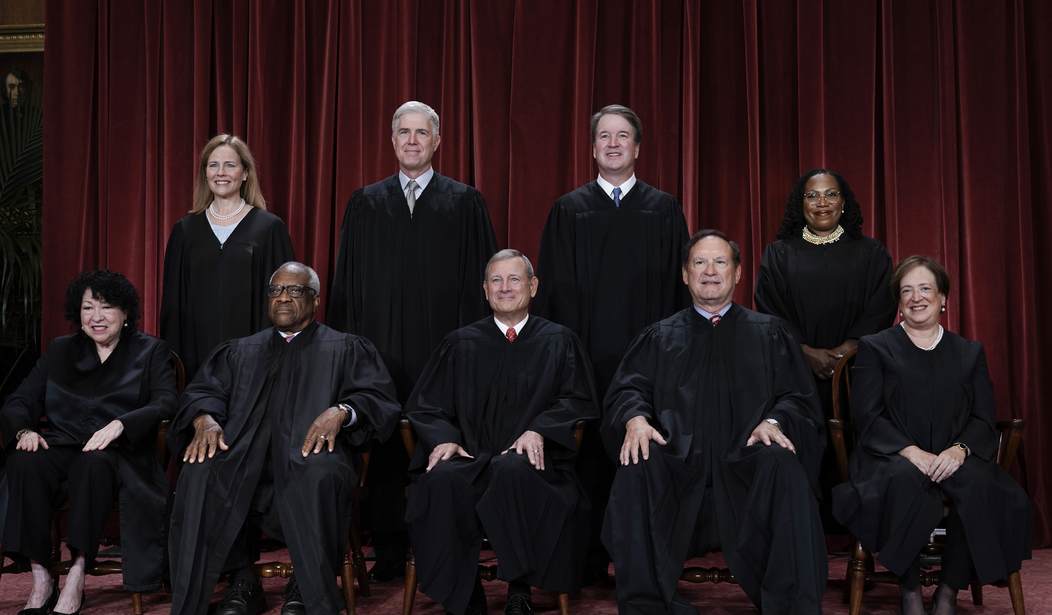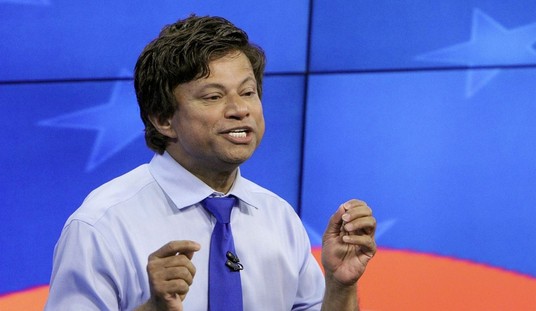The Supreme Court on Friday morning announced its opinion in Loper Bright Enterprises v. Raimondo and dealt a significant blow to the administrative state and the power wielded by federal bureaucrats.
The 6-3 ruling saw Chief Justice John Roberts joined by Justices Thomas, Alito, Gorsuch, Kavanaugh, and Barrett in the majority while Justices Kagan, Sotomayor, and Jackson dissented.
Originating with the Supreme Court’s 1984 opinion in Chevron U.S.A. v. Natural Resources Defense Council, Stanford Law defines the doctrine as “the idea that in litigation over federal agency action, the courts will defer to the agency’s own construction of its operating statute, unless that construction is outside the range of reasonableness, usually because the meaning of the statute is clear.”
As applied over the last few decades, Chevron deference gave “the executive branch considerable leeway in determining the scope of its own power” and grew to become “a central pillar of the modern administrative state” as “a systemic thumb-on-the-scales in favor of the government’s view of the meaning of the statute, even if that view changes with political winds and even if it contradicts earlier judicial interpretation,” Stanford Law’s explanation states.
The majority’s opinion penned by Chief Justice Roberts states that "Chevron is overruled" and "[c]ourts must exercise their independent judgment in deciding whether an agency has acted within its statutory authority."
"Careful attention to the judgment of the Executive Branch may help inform that inquiry," Roberts writes. "And when a particular statute delegates authority to an agency consistent with constitutional limits, courts must respect the delegation, while ensuring that the agency acts within it."
Recommended
Roberts, however, notes that "courts need not and under the [Administrative Procedures Act] may not defer to an agency interpretation of the law simply because a statute is ambiguous." That's the whole ballgame in which federal bureaucrats got away with extensive regulations merely because they were given deference by courts.
Friday's opinion, Roberts clarifies, does "not call into question prior cases that relied on the Chevron framework" meaning the "holdings of those cases that specific agency actions are lawful--including the Clean Air Act holding of Chevron itself--are still subject to statutory stare decisis despite our change in interpretive methodology."
Job Creators Network CEO Alfredo Ortiz said the Supreme Court's decision "finally reins in out-of-control regulators and bureaucrats who have for too long acted as unelected and unaccountable enemies of Main Street" and is "transformational in diminishing this threat and regulators' power."
More from Roberts on the defects of Chevron deference:
Perhaps most fundamentally, Chevron’s presumption is misguided because agencies have no special competence in resolving statutory ambiguities. Courts do. The Framers, as noted, anticipated that courts would often confront statutory ambiguities and expected that courts would resolve them by exercising independent legal judgment. And even Chevron itself reaffirmed that “[t]he judiciary is the final authority on issues of statutory construction” and recognized that “in the absence of an administrative interpretation,” it is “necessary” for a court to “impose its own construction on the statute.” Chevron gravely erred, though, in concluding that the inquiry is fundamentally different just because an administrative interpretation is in play. The very point of the traditional tools of statutory construction—the tools courts use every day—is to resolve statutory ambiguities. That is no less true when the ambiguity is about the scope of an agency’s own power—perhaps the occasion on which abdication in favor of the agency is least appropriate.
The significant win against the administrative state will have wide-reaching effects in the months and years ahead as the leniency on which federal agencies have relied to propagate bureaucratic burdens is no more.
"Today's decision fixes the decades-long error of handing vague and broad powers to unelected and unaccountable bureaucrats" and "restores the Constitutional power to write the law to where it should be—with the elected representatives of the American people," declared a statement from House Judiciary Committee Chairman Jim Jordan (R-OH).
This is a developing story and will be updated.

























Join the conversation as a VIP Member